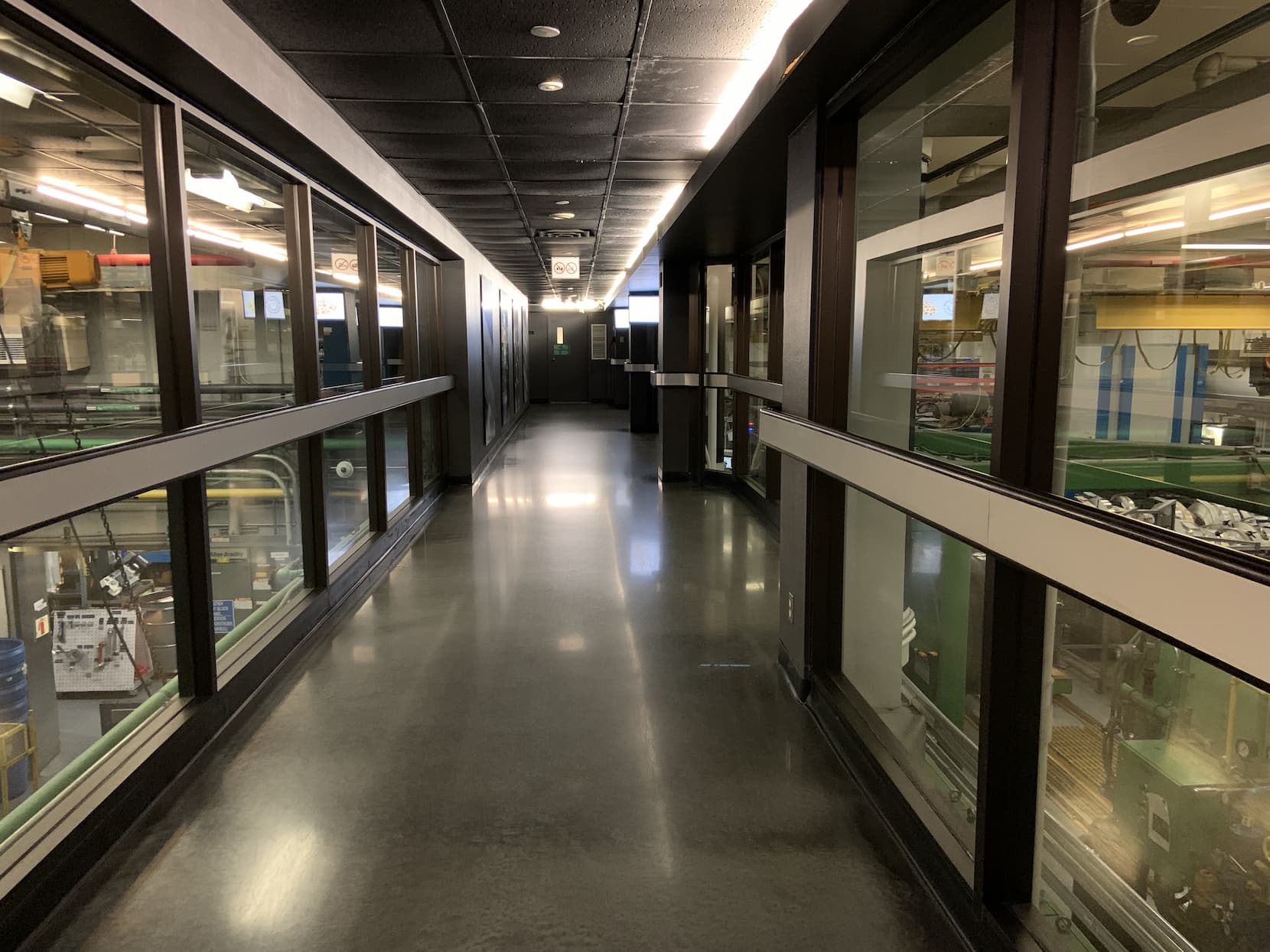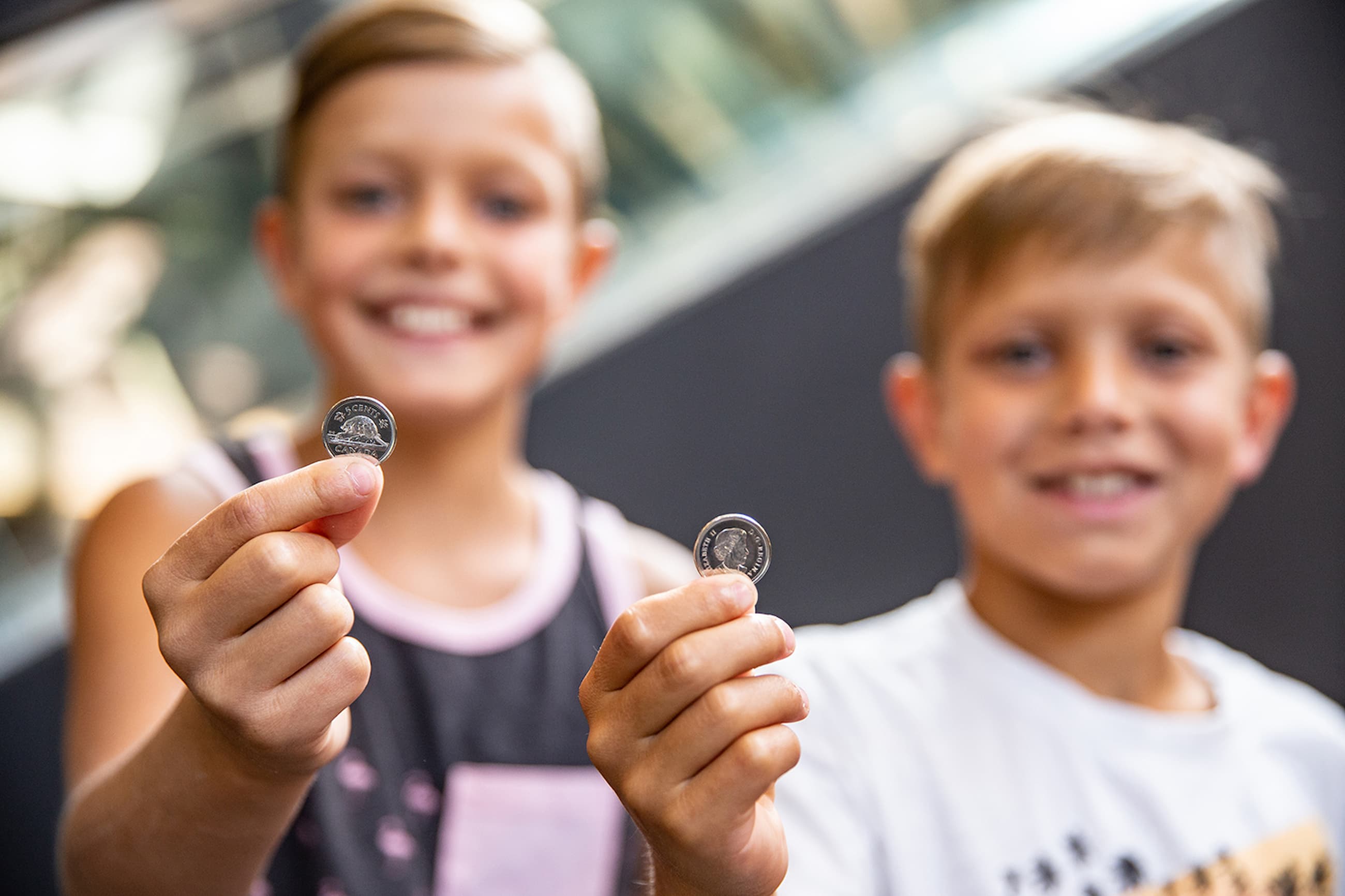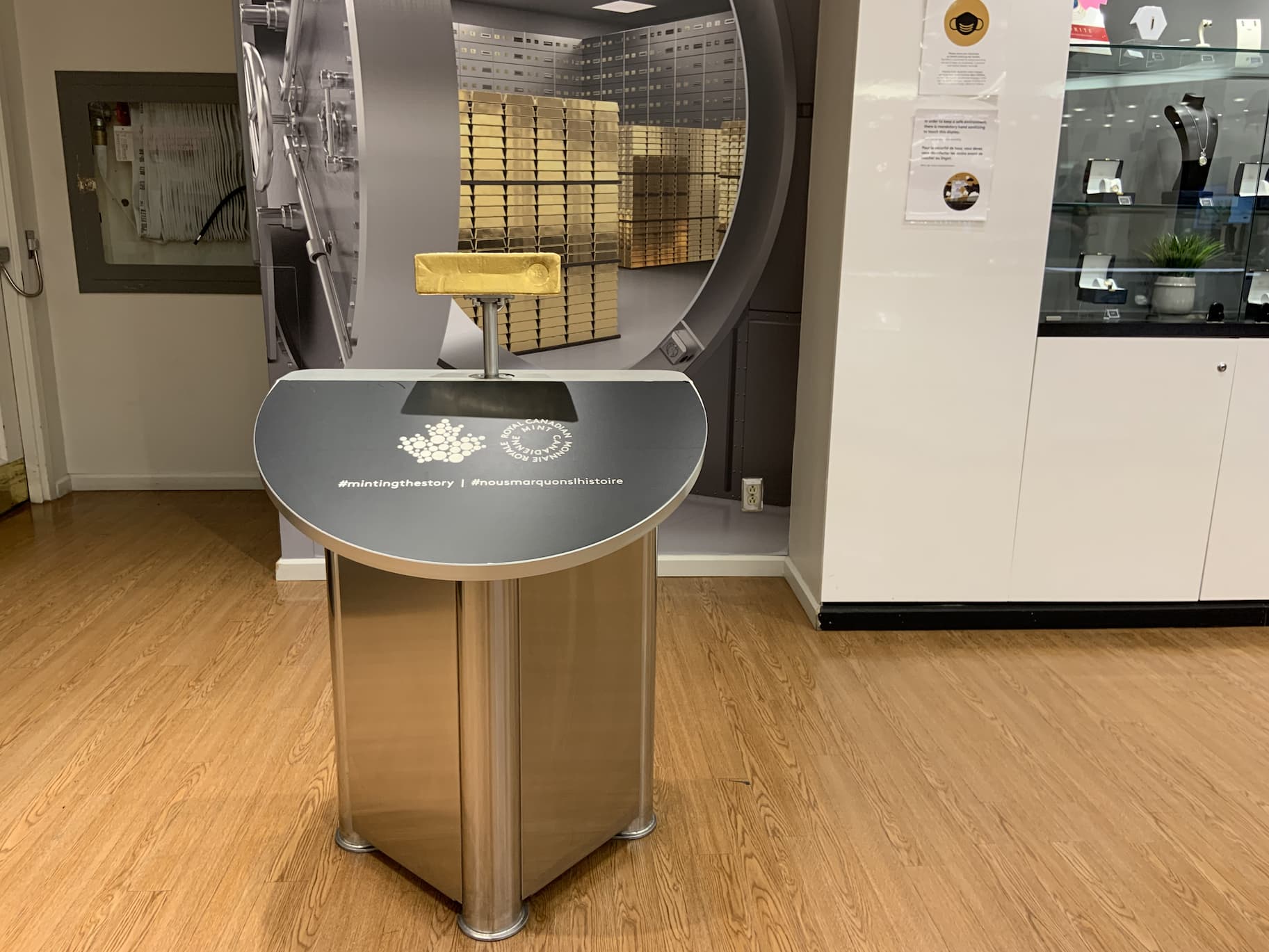Our Fascinating Coins
The Royal Canadian Mint is a captivating place at the crossroads of science, anecdotes, humanity and history. I went there to take a guided tour of the facilities and discovered an unfamiliar world where attention to detail is paramount, from designing a coin to putting it into circulation.
How are coins made?
Located in the heart of downtown Ottawa, the building is surrounded by a cast iron fence and teems with security guards. The tour starts in the boutique. I understood why there is so much security when I saw that we could handle a real gold bar. See if you can lift it! I tried, but it wouldn’t budge, not even by a millimetre.
The Royal Canadian Mint has long understood that perfection is in the details. They make it difficult to produce counterfeit coins. In recent years, coins have been marked by what the Mint calls DNA, a series of fine lines engraved into the coin that are very difficult to copy.
Circulation coins and collector coins are not made in exactly the same way. Circulation coins are the coins we use every day, while collector coins are purchased and carefully stored for investment purposes.

The Royal Canadian Mint has no lack of imagination when it comes to collector coins: 3D coins, coins with embedded Swarovski crystals, coins that glow in the dark and more. I was impressed by their beauty. They’re not just gold or silver coins—they’re works of art.
Regardless of the type of coin, each one is inspected by two to eight pairs of eyes before being approved in order to avoid manufacturing defects, such as a fingerprint pressed into a coin that was handled before it had cooled enough or defective DNA.

Remembering their sacrifice
During your visit, a look at the military coin display is a must. There, you will see a special commemorative 25-cent coin with a red poppy that was created in 2004 to honour the service and sacrifice of Canadian soldiers and veterans. It is the world’s first coloured circulation coin.
In the British Army, the Victoria Cross is the highest award that can be bestowed upon a member of the military. The Royal Canadian Mint also produced a military medal, the Canadian version of the Victoria Cross. Since its creation, informally in 1992 and officially in 2007, the Cross has never been awarded to a soldier. It was created from metal from every province and the original gunmetal used to produce the British Victoria Cross. I confess that this story gave me chills!

Highlights
- Canada has produced or is currently producing coins for many other countries, including the Philippines and Australia.
- The Royal Canadian Mint was selected to produce the medals for the 2010 Olympic and Paralympic Games in Canada. They display a high relief that mirrors the Canadian landscape and is inspired by an artwork by Corrine Hunt, a Vancouver-based artist of Komoyue and Tlingit heritage.
- Canada was the first country to use Braille for the inscriptions on the reverse side of the Paralympic medals.
- The Royal Canadian Mint is the only mint in the world to issue 99.999% pure gold collector coins.
320 Sussex Drive, Ottawa, Ontario
First tour is at 10 a.m. and last tour is at 4 p.m. every day.
Adults (18+): $12 | Children (ages 5–17): $8 | Infants (ages 4 and under): Free
Special prices for families and seniors | Tours start every 15 minutes
See a coin that has been to space. Learn the meaning of the different representations of the Queen on the coins. Discover why Canadian gold is valued so highly. Book your tour now: you’ll never look at a handful of coins the same way again!
+
Do you love history and discoveries? Extend your stay in the Outaouais by visiting the eight national museums.


